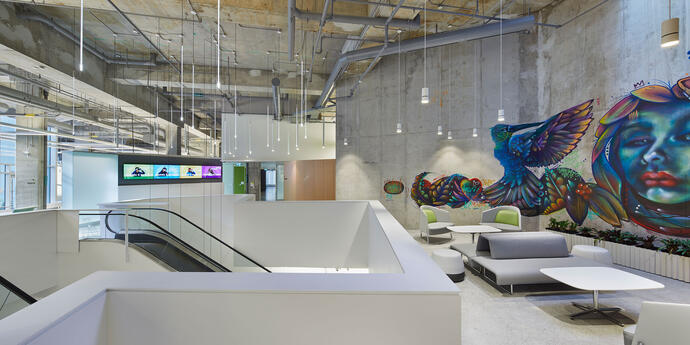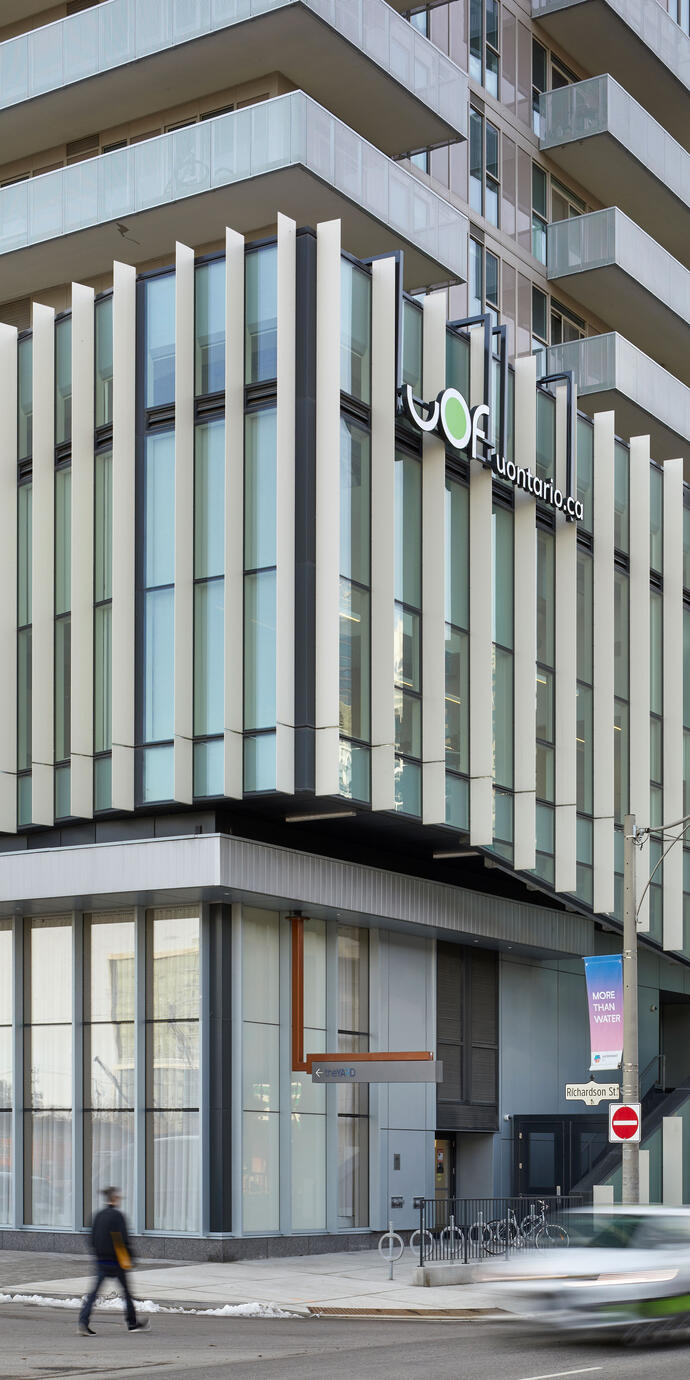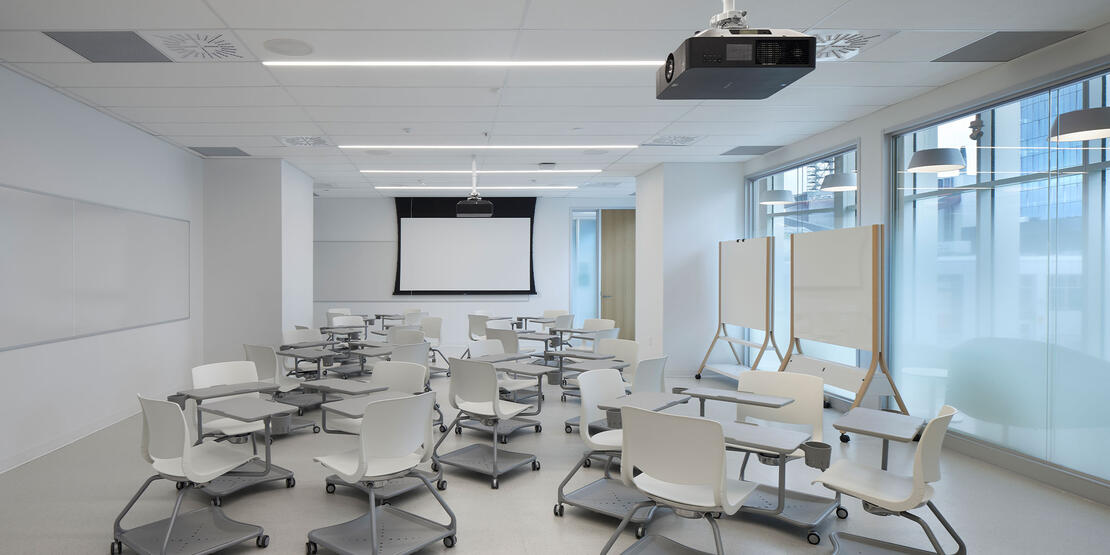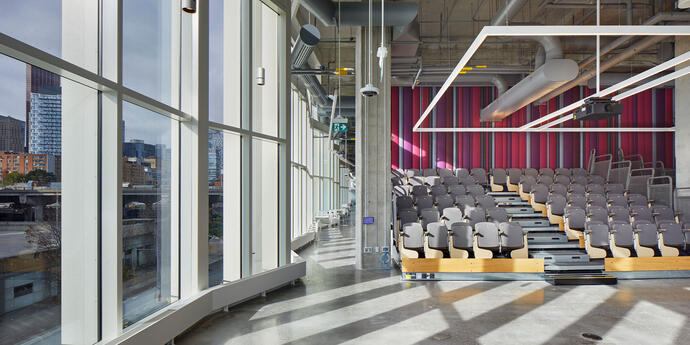
Grands Prix du Design, Gold Certification (2022)
Ontario’s first French language university.
Occupying the second floor of a mixed-use building in downtown Toronto’s East Bayfront, the Université De L’Ontario (UOF) project involved a 50,000 square feet tenant fit-up and renovation. The project team prioritized the client’s goal to maximize student-faculty interaction by creating open concept spaces with an academic-focussed design. The campus features classrooms, offices, workrooms, meeting rooms, computer labs, recording studios, and multi-faith rooms.
Smith + Andersen was engaged as the mechanical, electrical, communications, security, and audio-visual consultants, as well as sustainability services.
Ontario’s first French language university.
Occupying the second floor of a mixed-use building in downtown Toronto’s East Bayfront, the Université De L’Ontario (UOF) project involved a 50,000 square feet tenant fit-up and renovation. The project team prioritized the client’s goal to maximize student-faculty interaction by creating open concept spaces with an academic-focussed design. The campus features classrooms, offices, workrooms, meeting rooms, computer labs, recording studios, and multi-faith rooms.
Smith + Andersen was engaged as the mechanical, electrical, communications, security, and audio-visual consultants, as well as sustainability services.
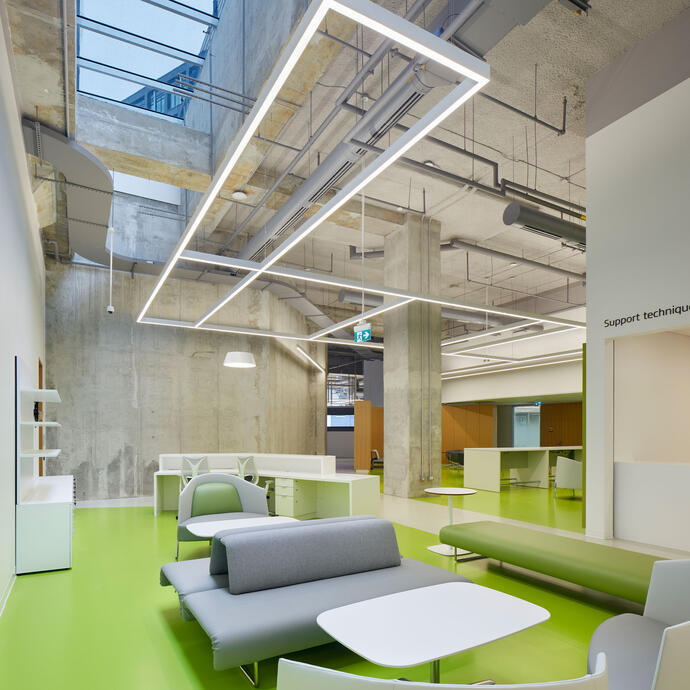
Our mechanical team designed cooling and ventilation systems using large 182-ton indoor variable air volume (VAV) handling units, while our electrical team incorporated a heating system with perimeter heating. This is supplied throughout the building by hot water fan-assisted perimeter convectors. Supply air is delivered through high induction diffusers to reduce the stratification effects of high ceilings, and to promote mixing for increased thermal comfort among students and faculty alike.
The entirety of the project team worked together to accommodate the irregular shape of the building, high glazing, and exposed concrete walls to improve flow throughout the building and create a space with learning at the heart of it all. To complement the floor-to-ceiling glazing, and better showcase the 360-degree views of the city, the project team worked to minimize the surrounding mechanical infrastructure.
